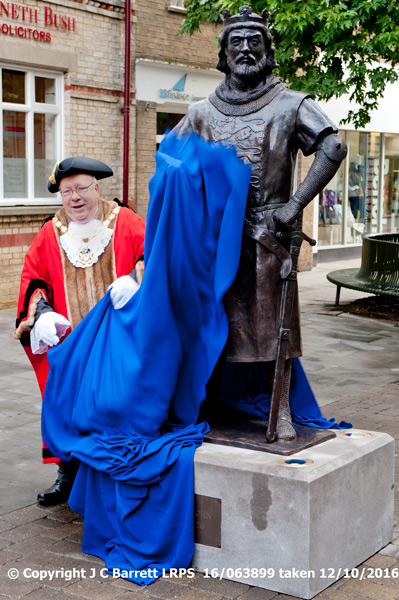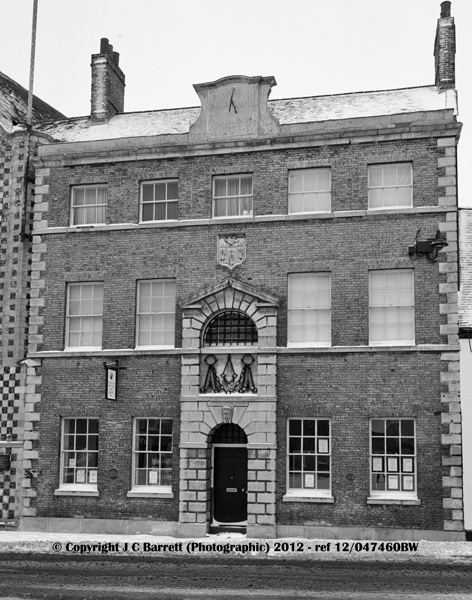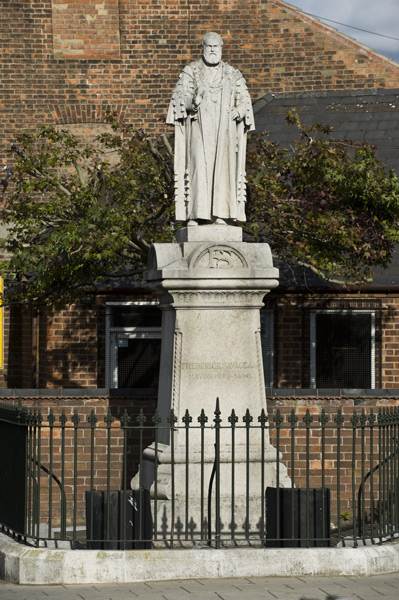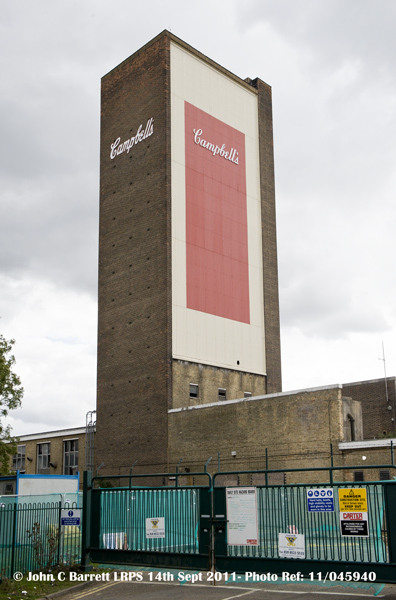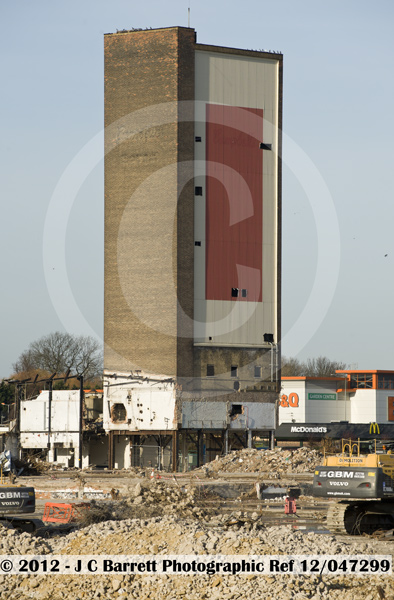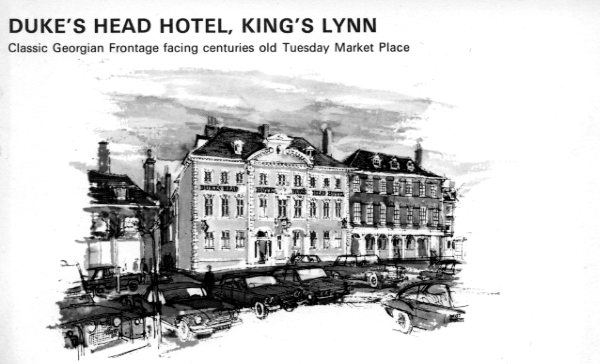About King's Lynn with Photographs Page 1 of 2

History of King's Lynn.
The town of King's Lynn lies on the banks of the Great Ouse and is one of Norfolk's northernmost towns. King's Lynn was originally called Lin. A medieval town was formed, with a market and a church being constructed. It was then called "Bishops Lynn" after Bishop Herbert de Losinga, the first bishop of Norwich Cathedral, who founded the town around 1095, its name was not changed to "King's Lynn" until after the reformation in the 16th Century when Henry VIII took over its lordship. Two rivers contributed to the main growth of Bishop's Lynn - with Purfleet to the north and Millfleet to the south. As a lot of trade came from the river, the town expanded to meet the river banks. Wealthy merchants constructed buildings around Bishop's Lynn. The town is still known as a port town - as it has been known since the medieval days. Kings Lynn has many splendid buildings and some lovely old streets.
At one time a walled town with four gates, very little remains today except the ruins of the Guannock Gate in Vancouver Park and the splendid South Gate on one of the roads into the town. Originally made of wood the gate was rebuilt in 1450 and stone faced in 1520. Today it is just one of the many splendid memorials to times past.
The mayor of the borough, Cllr David Whitby, unveiled the statue of King John on 12th October 2016 which stands proudly in New Conduit Street, King's Lynn, Norfolk.
King John statue unveiled.
One of history's notorious bad guys will be celebrated in King's Lynn with the unveiling of a life-size bronze statue of King John in the town centre on Wednesday, 12 October 2016.
The mayor of the borough, Cllr David Whitby unveiled the statue and said it would possibly be the most significant and historic act of his term in office. Local historical author, Gareth Calway performs his poem Bad Ass King John - a favourable portrayal of the much-maligned monarch who changed the fortunes of our town.
The date has been chosen because legend has it that it was on this day in 1216 that King John's treasure, comprising the crown jewels, gold and money, was lost in the boggy marshes of the fens between King's Lynn and Lincoln, when he was returning to Newark, where he passed away a few days later.
It may seem strange that King John should be celebrated in this way when he was so deeply unpopular during his reign, but in King's Lynn he had support, not least because he granted the town a special charter in 1204 giving the guilds the ability to govern themselves.
The King John Charter, which is held in the borough archive, established Lynn as a free borough. This gave the town the power to rule itself locally, free it from paying taxes to the crown and enabled it to create a merchants' guild, which helped the town to prosper and become one of the largest and busiest ports in the country.
King John's legacy can also be seen in the King John Cup and King John Sword, (carried today by Don Bruce, Mace bearer) part of the town's collections based in the town's newest attraction Stories of Lynn. Neither object can be dated to King John's reign but the very fact they bear his name demonstrates the esteem with which the town held him for centuries after his death.
The £22,000 statue cast in bronze, has been created by artist Scottish sculptor Alan Beattie Herriot, who was in the town to see it unveiled, based on a variety of sketches, images and theatrical portrayals of this notable character. It has been funded by the Borough Council of King's Lynn & West Norfolk as part of the Stories of Lynn Heritage Lottery fund scheme.
The King John statue has pride of place in New Conduit Street King's Lynn, with the tree and the Vancouver Arch behind it. It is hoped that the statue will spark interest in the town's rich heritage and encourage visitors to explore the town and visit local attractions including the newly-opened Stories of Lynn. In October 12, 1216 legend has it that King John lost the crown jewels in the Wash, the statue was unveiled 800 years to the day later. According to legend, King John's baggage train, including the crown jewels, was en route from Lynn to Lincoln, via a dangerous shortcut across what was then an area of marsh and bog, when it was swallowed by The Wash.
Cllr Elizabeth Nockolds, borough council cabinet member for Culture, Heritage and Art, said: "Public art is naturally a talking point so we hope this statue will encourage people to think about the heritage of the town and to visit the many attractions that celebrate it. We hope it will become as photographed as the statue of Captain George Vancouver by the Custom House."
To celebrate the unveiling and the important role King John played in the history of the town, a special King John Day will take place at Stories of Lynn in King's Lynn on Wednesday 26 October 2016. Visitors will be able to see the magnificent King John Cup and learn about The King John Charter.
There will be opportunities to mint a King John Penny, and design a King John Cup to take home.
A special trail will mean visitors can help King John find his long lost treasure. Complete all of the clues to be entered into a prize draw to win a treasure chest full of goodies fit for a king!
Activities will run from 11am - 3pm on Wednesday 26th October 2016 and are free with museum admission.Borough Council of King's Lynn & West Norfolk, King's Lynn, PE30 1EX Tel: 01553 616200 e-mail: www.west-norfolk.gov.uk
Last  on 26th December 2016
on 26th December 2016
Gaol house
Gaol house.
Opposite the church across the square are two other important buildings. To ones left is the old Goal house built in 1784 which today houses a museum and to the right is Trinity Guildhall with its beautiful chequered stone work built in 1421. It is the home of Tales of the Old Gaol House, which tells the stories of some of Lynn's more infamous characters in the original cells of the town gaol.
Also housed here is the Regalia collection, whose exhibits feature a series of facsimile royal charters and the priceless King John Cup.
Borough Council of King's Lynn & West Norfolk, King's Lynn, PE30 Tel: 01553 774297 e-mail: www.west-norfolk.gov.uk
King's Lynn Mart 2012, 2013, 2014 and 2015.

King's Lynn Mart - Click on the above Photograph to view our KING'S LYNN MART WEBPAGE
Frederick Savage, Engineer .
Photographs taken by John Barrett LRPS © 2011
Frederick Savage, Engineer.
Frederick Savage was born on the 3rd of March 1828 in a village called Hevingham, Norfolk. Attending Sunday School and the local free school he acquired a very basic early education. His first employment was preparing wood for a local hurdle manufacturer at age 10. His parents were handloom weavers, and were suffering from a national depression. His father William, having had to sell his farm to the squire, was caught poaching. This was considered to be an awful crime. The only crime worse than poaching was murder. William received a 14 year sentence in Tasmania. He was released after 7 and requested his wife join him. She declined and they spent the rest of their lives apart. Spending some time as a poorly paid farm labourer, Frederick decided that he had had enough and decided to try and better himself.
He began a new career at sixteen working for Thomas Cooper who was a Whitesmith* and Machine Maker. When Mr. Cooper died the firm was taken over by John and James Gill who were Millwrights and Machine Makers. Frederick gained a considerable amount of experience and knowledge about the manufacture of farm implements with the firm. He then moved to Holmes and Sons for a short time.
Frederick married Susannah Bloyce on the 26th of August 1850 at St. James Church, Norwich. The couple set up home in Kings Lynn, a year later, which was a new Borough. Frederick took employment with Charles Willett who was described as a "Brazier, Whitesmith*, Iron Monger, Wholesale and Retail Dealer, Tinplate worker, and Bell Hanger".
Mr. Willett retired in 1850. Frederick decided to set himself up in business as a smithy. Soon his foundry was too small and Frederick had to move. He occupied part of an old workhouse for six years. Moving again in 1863 to bigger premises on St Nicholas Street, which he called "St. Nicholas Works". The company moved again in 1872 where it would remain. By now Frederick was describing himself as "Engineer and Agricultural Machinist". This site was on "new" land and Frederick also built a house there for himself and his family to live in.
Frederick was appointed as "Justice of the Peace" (JP) and was Mayor in 1889-90. A monument to him was unveiled on the 27th of May 1892, the only monument to a public man in Kings Lynn.
Savage's first steam powered ride was the Velocipede (a bicycle roundabout). Early bicycles, or Velocipedes, were all the rage c.1870 and Savage had apparently been manufacturing bicycle roundabouts without motive power for a while. Although the roundabout was propelled by a steam engine the riders could still pedal their heavy machines around.
The bicycle and horse were not the only things Savage bolted to a roundabout. Using boats was an obvious move and a ride called Sea-on-Land made use of replica ships that were made to rock and pitch on cranks attached to large wheels moving over a circular track beneath a revolving platform.
This idea was also applied to mounts other than boats. The so-called "platform Gallopers" of the early 1880s used this idea, replacing boats with horses - another variant used galloping cockerels. These platform rides lacked the "top motion" of later machines, although the steam engine was connected to a spinning top that was, in turn, linked to the platform.
The railway was also a natural subject for the roundabout and by 1885 Savage was producing "Tunnel Railways" on which a locomotive pulled carriages around a circular track, partially obscured by a tunnel. Readers may be forgiven for thinking that the channel tunnel is a fairly recent idea, but a by-product of the 19th century railway boom was a much publicised desire to link London and Paris via a tunnel under the sea.
A bizarre postscript to this early period of roundabout building is something called the Razzle Dazzle of the 1880s and 1890s. Sometimes called an "Aerial Novelty" it consisted of a flat circular elevated platform mounted on a centre pole, with seats and an outer wall. A steam engine below the platform provided the revolving movement and the whole thing was designed to tilt as it revolved. On earlier machines this was achieved in true swingboat fashion by men yanking on ropes. This tilting movement was later automated with the introduction of a gimbal beneath the platform. It is said that this ride was never as popular to experience as it was to look at.
Frederick Savage enjoyed prominence as the pioneer of the steam roundabout.
Frederick Savage died on the 27th of April 1897, aged 69
Borough Council of King's Lynn & West Norfolk, King's Lynn, PE30 Tel: 01553 774297 e-mail: www.west-norfolk.gov.uk
The Campbell's Factory.
Photographs taken by John Barrett LRPS © 2011
The iconic Campbell's Tower
Workers have begun removing dangerous asbestos from the former Campbell's site at Lynn as demolition teams prepare the ground for Tesco's superstore expansion. Mechanical diggers and grabs are pulling apart the former Campbell's office complex facing Hardwick Road in readiness for Tesco's £40 million redevelopment of its store and the adjoining site, which was given planning approval by West Norfolk Council in November 2010.
The iconic Campbell's tower, one of Lynn's best known landmarks, will be demolished as part of this process - on Sunday 15th January 2012 (between 07:30am to 08:30am) - after English Heritage and the Secretary of State for Culture decided against granting it listed status.
Ironically, local company R.G.Carter, which built the multi-million pound factory on its 63-acre site for Campbell's in the late 1950s, has been brought in by Tesco to carry out the demolition work.
The old office block has now being levelled, the main factory should be demolished between mid-October and mid-November, followed by removal of the brick-built water tower. "They then have to remove the foundations and slabs, crush the concrete and clear up all the mess, ready to start building in late January or early February 2012."
In the first phase of construction, Tesco will build its new superstore, and in the second phase, demolish its current 24-year-old supermarket and replace it with a hotel, car showroom, restaurants, a pub, 50,000 sq ft of industrial premises and 10,000 sq ft of office space.
Campbell's, which had been bought by Premier Foods in 2006, announced the closure of its factory, with the loss of nearly 250 jobs, in January 2007. It was the forerunner of Lynn's industrial expansion when its factory opened in June 1959, and was the first major Campbell's plant to be constructed outside America. At its peak in the early 1990s, it had more than 700 workers.
Before the Big Bang.
Photographs taken by John Barrett LRPS © 2011
Six photographs taken in the days leading up to the demolition.
15th Jan 2012 - Daughter blows up tower landmark - Sarah Griffiths triggered the demolition of the 52 year-old Campbell's factory tower.
An estimated 3,000 people gathered to watch Campbell's tower demolished in King's Lynn today. It was American firm's first UK base when it opened Campbell's in King's Lynn in the 1950s, employing hundreds of local workers. At its peak in the early 1990s it had more than 700 workers on the site. This local landmark has now disappeared forever with the destruction (by explosives) today.
Sarah Griffiths whose father was scalded to death at the factory was given the chance to press the button to demolish the iconic Campbell's Tower. This gave Sarah and her family a "final closure" after her father Mick Locke was killed in July 1995. The tower was a constant reminder that she had been robbed of her dad, Mick Locke. He died hours after being scalded by a huge blast of steam while trying to close a pressure cooker-type machine at the factory. Another worker Jim Tripp was severely hurt in the same incident as Mr Locke, and was left disfigured.
FACTS: Campbell's tower was tallest building in the town, the Large White Silo at the towns docks (ABP) remains the tallest structure in King's Lynn.
The Custom House.
The Custom House
The Custom House in Kings Lynn was built in the late 17th century originally as an exchange or trading centre for merchants. It became the official Custom house in 1703 and was operated by HM Customs and Excise until 1989. The building now houses the Tourist Information Centre.
The Custom House, Purfleet Quay, King's Lynn, PE30 1HP. Tel: 01553 763044. Fax: 01553 819441. e-mail: kings-lynn.tic@west-norfolk.gov.uk Web: www.west-norfolk.gov.uk
King's Lynn Minster (St Margaret's Church)
King's Lynn Minster (St Margaret's Church)
One of the largest town churches in the country. Founded in 1101 and partially rebuilt in 1741 after the spire collapsed onto the nave in the storm. Look out for the flood level markings by the west door. In 2011, the current Bishop of Norwich - supported by the Borough Council - designated St Margaret's as a Minster Church. This status reflects the service that it offers beyond its locality, to West Norfolk and the Diocese of Norwich, as well as its size and outstanding historical and architectural significance. The Minster and Priory Church of St. Margaret, St Mary Magdalene and All the Virgin Saints can be found in the historic surroundings of the Saturday Market Place in the heart of King's Lynn. Founded by the first Bishop of Norwich, Herbert de Losinga, in 1101, the Church has offered a welcome to pilgrims and visitors for over 900 years. The Church is open all day, every day. Visitors are welcome to join us for any service or just walk around and enjoy the atmosphere of this Historic and Holy Church.
At a carol service held in St Margaret's Church on Sunday 18th December 2011 the Bishop of Norwich (the Rt Revd Graham James) declared the church to be a Minster Church, and will be known as King's Lynn Minster.
This was a historic event in the life of the church that has served the people of King's Lynn for over 900 years. Two copies of the Historic mandate were signed and sealed by the Mayor of King's Lynn and West Norfolk, Cllr Colin Sampson, and by the Bishop of Norwich. One copy will be kept in the church and one in the Town Hall.
A Minster is a large and historic church which serves a much wider area than its own local parish. St Margaret's is certainly large and historic and for many years has hosted Borough Civic Services and big occasions arranged for Borough or County-wide organisations, or for the Norwich Diocese.
The Revd Canon Christopher Ivory, Vicar of St Margaret's said, St Margaret's has served the town of King's Lynn and the wider area for over nine centuries and we still seek to be a spiritual home for all the community of west Norfolk where we can gather to celebrate the joys and mark the sorrows of the town and the borough. As well as the regular congregation, a large number of people visit the building. Sometimes they come for services; often they come to admire the architecture, or the beautiful and historic furnishings, or the long history that it represents. But what they find is a place of peace, somewhere to stop and think awhile, to be close to God maybe sitting in a seat in which people have sat for the same reason for 650 years. St Margaret's isn't any more important than other church buildings, but we are both humbled and honoured that the Bishop of Norwich has decided to give us a new title that reflects our commitment to serve the community beyond the immediate parish boundaries and invites the wider community to see us a place for them. We hope also that having a Minster will be another signal to people well beyond our area that King's Lynn is a beautiful historic town that is well worth visiting.
At the heart of the old town, and overshadowed by the 12th century church of St. Margaret, is the Saturday Market Place.
The Church of St Margaret built in 1101 on the instructions of Bishop Losinga was rebuilt in the 13th century and features an unusual moon clock on the tower that shows the phases of the moon and the times of high tide in the town.
Moon Clock, King's Lynn Minster (St Margaret's Church) An unusual church clock. It does not show the time, but shows the phases of the moon and also the next high and low tide at Lynn.
The letters actually spell out "Lynn High Tide" if read clockwise. The L represents midday and the G midnight. Given to the church by a 17th century church warden and clockmaker Mayor Thomas Tue.
Borough Council of King's Lynn & West Norfolk, King's Lynn, PE30 Tel: 01553 774297 e-mail: www.west-norfolk.gov.uk
Greyfriars Tower.
Greyfriars Tower.
Yet another building that stands out on the skyline from the river is Greyfriars Tower not least because it leans at an alarming angle. Octagonal in shape it is all that is left of a 14th century church but was left standing as a landmark for ships.
Borough Council of King's Lynn & West Norfolk, King's Lynn, PE30 Tel: 01553 774297 e-mail: www.west-norfolk.gov.uk
Tuesday Market Place.
Tuesday Market Place..
The Tuesday Market Place was built in the 12th century as the town expanded. It has many impressive classic buildings including the Dukes Head Hotel built in 1686 and from where the coach to London departed. It also had a very popular cock fighting room. Missing from the market place is the market cross, demolished in 1830. The Corn Exchange - is a grade II Listed Building on the Tuesday Market Place, home to a multi-purpose venue for concert and community use.
The Witch's Heart. On the northern side of the Tuesday Market Place stands an old building that was re-fronted in the Georgian period. Over the door is a diamond shape surrounding a heart. It has been told that in 1616 a young woman called Mary Smith was burnt as a witch, and as she was dying, she proclaimed her innocence and her heart is said to have sprung from her body and landed on the house of the Rev. Roberts He was the priest who had declared her a witch.
Lynn still has two weekly markets held on every Tuesday and Saturday on the respectively named market places.
Borough Council of King's Lynn & West Norfolk, King's Lynn, PE30 Tel: 01553 774297 e-mail: www.west-norfolk.gov.uk
Dukes Head Tuesday Market Place.
Dukes Head Tuesday Market Place..
Located in the heart of King's Lynn old town and overlooking the historic market place, the Duke's Head is perfect for discovering what Norfolk has to offer to the business and leisure traveller. Since Georgian times, this impressive classical building has welcomed visitors in considerable comfort and style.
Its location overlooking the ancient market place in the centre of King's Lynn would have denoted its importance in a town peppered with fine historic buildings. The Duke's Head is located walking distance away from King's Lynn station, nightlife, restaurants, bars and leisure club. Kings Lynn is serviced by regular trains to London and serves as an ideal location for discovering Norfolk.
North Norfolk is an ideal tourist destination. Whether you enjoy the lively atmosphere and entertainment offered by traditional seaside resorts, the tranquillity of the small fishing villages, which spring to life at high tide, you can't help but be impressed by the beautiful coastline and the fascinating history of its towns.
The Hotel is currently undergoing a 1.3 million pound refurbishment under the new management of Surya Hotels Ltd.
